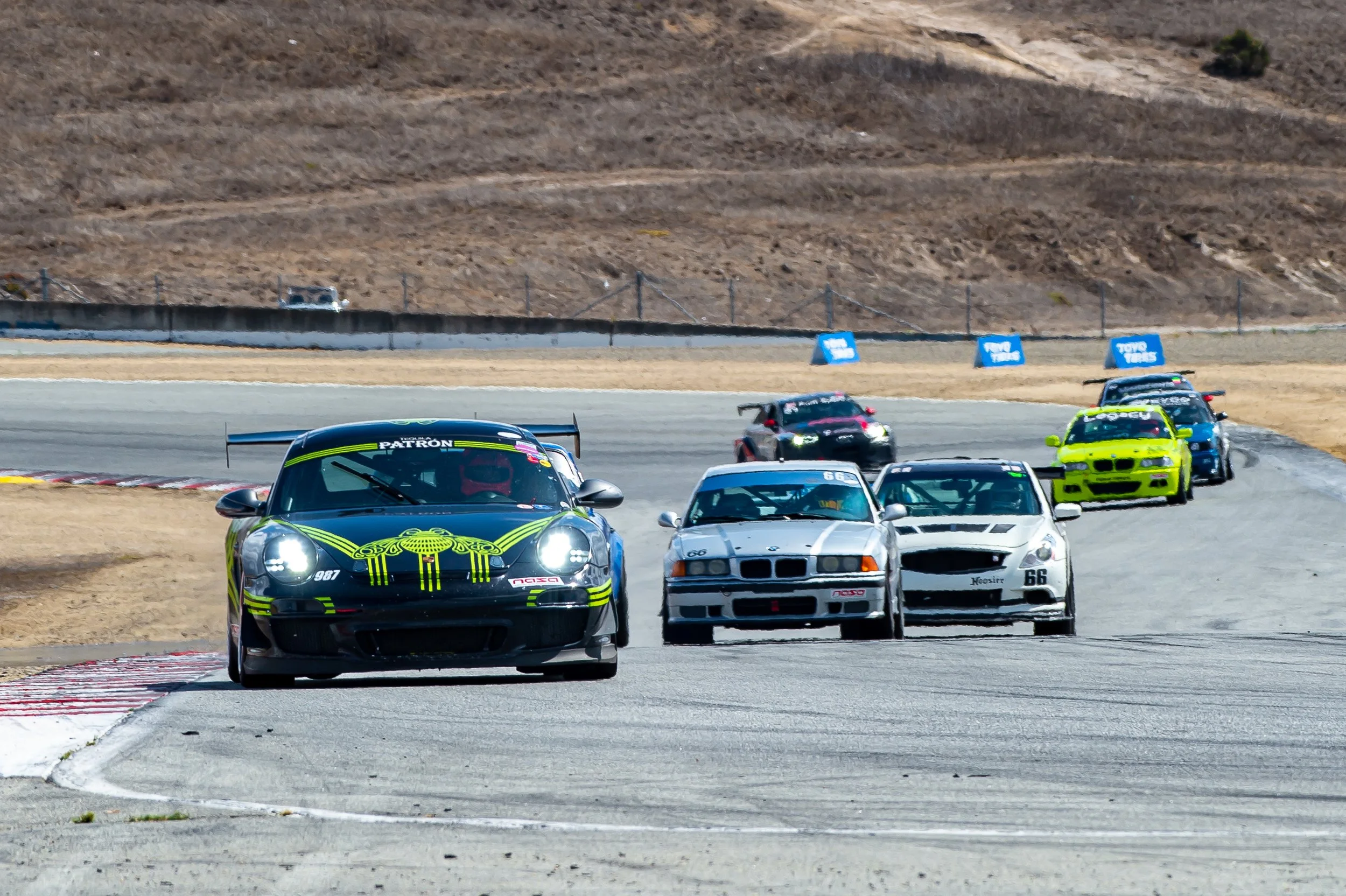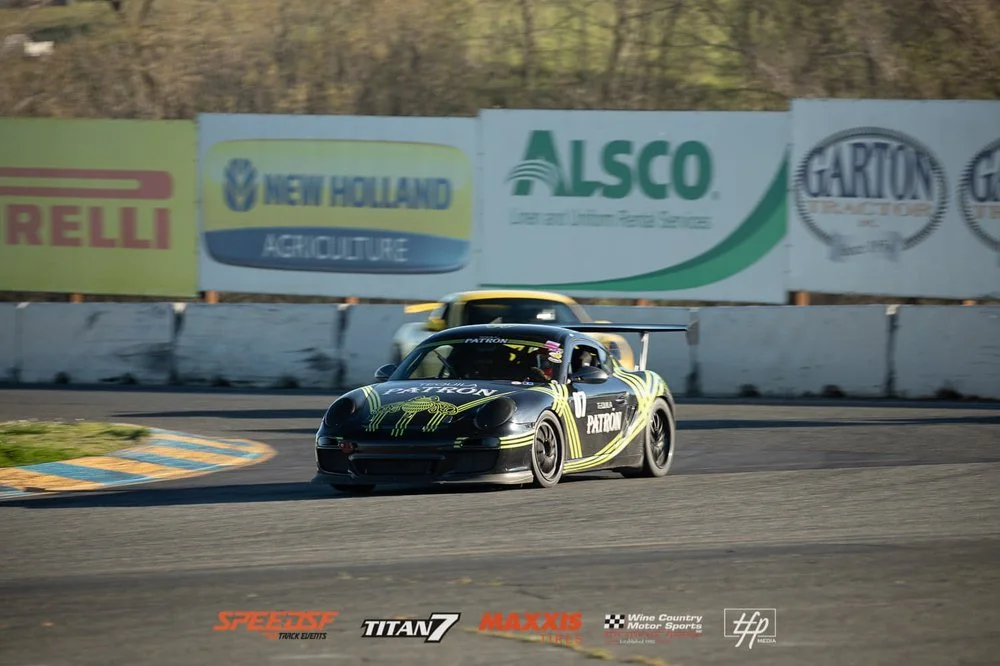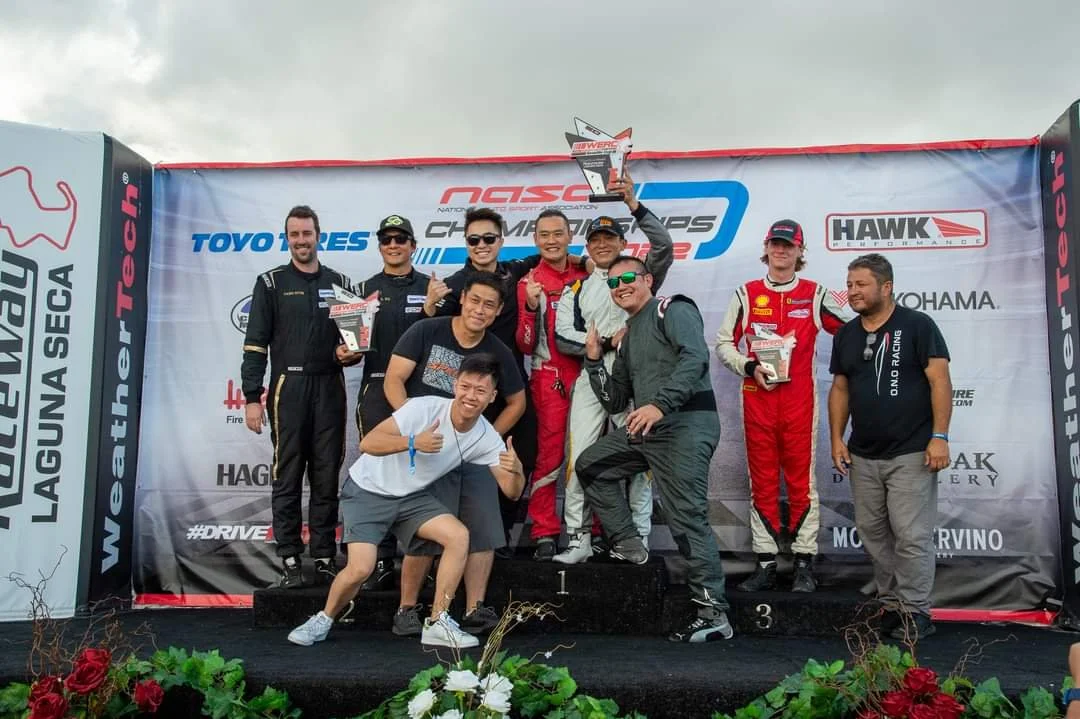Cayman Proves Potent: Speed SF Wins At Laguna In NASA E0
A year of maybes and meager testing were all Patrick and Gary had to boost their confidence before heading into the the fifth event of the 2022 NASA WERC season.The two had been dicing mid-pack in their 350Z the year before, but the 350Z’s fuel consumption was far worse than the top running BMWs in class, they realized they needed a change. For this season, they decided to step into a faster, nimbler, more fuel efficient machine to battle in E0.
The 987 Cayman S they purchased had already been semi-sorted for track usage, but the PDK transmission presented a few problems during the third WERC event of the season: a three-hour race at Auto Club Speedway. Overheating the transmission kept it from shifting out of fourth for a period of time, but, thanks to a little luck, they still finished second.
Still, it was the first race of the season and it wasn’t that well attended, which led both Patrick and Gary to accept they needed more speed and greater reliability if they wanted to be competitive at Laguna Seca, where the race would be more than twice as long.
Between these two races bookmarking the 2022 season, they made sure they were prepared. They held numerous tests at Speed SF Track Events—their focus being on improving its stamina. A string of faultless 100°F test days at Buttonwillow secured their belief in the car and its ability to last a 6.5-hour race, but the handling wasn’t up to par yet.
“The people who say that the 275 is enough probably haven’t pushed it hard for longer periods of time,” said Patrick.
The Cayman’s basic responses and handling balance felt fine, but the undersized tire was not handling the abuse well. To improve traction, they decided to downsize their rear swaybar and run an OEM Boxster bar. Additionally, with all the weight in the back and the high loads in the corners, the 275s would not last long enough, so Patrick and Gary decided to bump them up to a set of 295s. They fit under the factory bodywork without any massaging.
Handling problems solved, they still had one or two reliability issues they had to address. To ensure the drivetrain wouldn’t cause them any consternation during the longer races. Auto Logic and Elite Performance, vital players in this car’s rushed development, added two radiator fans, a new PDK cooler, and a larger-capacity PDK oil pan.
There was one new problem they hadn’t anticipated. The factory power steering pump tends to overheat over long stints. This OEM pump was removed, and in its place went an electric pump from LN Engineering. They decided to move this new pump, a little heavier than the old one, to the front. In addition to improving the weight distribution, the electrical pump also reduced the engine load.
At this stage, the Cayman was sturdy and well sorted, and it was up to the drivers to get their laps in before heading to Laguna Seca. They took their prepped race car to Speed SF lapping days because they knew their advanced drivers were fast and aware enough to give them plenty of clean laps.
In pushing hard for long sessions, they noticed the rear tires would occasionally lock, hindering their progress. CounterSpace Garage stepped in to sort this problem out; monitoring their brake data via the AIM system and relaying both some technical suggestions as well as a new pad to suit their needs.
Auto Logic kept the car maintained and helped find a neutral, predictable, stable setup for the long hauls.
“We needed a brake pad that we could modulate so we wouldn’t activate the factory ABS and go into ice mode,” Patrick stated.
With better understanding on the braking pressure and the ABS threshold, they found that the braking distances were consistent enough throughout long, hot stints to keep the nannies from intervening. It was one of the few things contributing to the positive half of their mixed feelings heading into the final race of the WERC season.
The weather reports ahead of the weekend were inconsistent at best. Rain was forecasted, and the car hadn’t really been run in wet conditions. They arrived prepared with 4 sets of tires—with an extra set of rains in case they would have to do lots of wet running. Thankfully, Titan 7 were kind enough to give them an extra set of wheels to help minimize their tire headaches. Considering Titan 7 rushed the set there with very little notice shows the lengths they go to to support their racers.
It was still drizzling in Monterey the day before the race. The following morning, they drove out a little cautiously and avoided the curbs the first few laps, but it became clear that the track was dry enough to attack towards the end of the session. Come race time, the surface was grippy enough to flirt with the limits comfortably.
Their dry-weather running had prepared them well; they qualified first in the E0 class and readied themselves for a hectic start with forty-four other cars sharing the track. Thankfully, their start went like clockwork: a smooth getaway, no silly errors, and strong pace from the outset. Aided by multiple yellows, they did not have to spend too much fuel; their sixteen-gallon fuel didn’t feel as small as it might’ve
By the end of the first hour, they were a couple laps ahead of second-place runners Team Tazio Ottis Racing. However, two hours into their race, just as Patrick was cresting the Corkscrew for the last time in his first stint, he ran into trouble. Well, trouble ran into him.
As Patrick dialed his pace down slightly for the in-lap, an aggressive overtaker in a faster ES car crested the hill before Turn 7 and drove right into the back of the Cayman, tagged it at the left rear quarter, and spun Patrick and his Porsche around. Patrick did all he could to keep the car on the island, and then, breathing heavily, he coasted downhill to the pits for a horribly hectic inspection. For a second, he thought it might be over.
The collision forced them to spend a little more time inspecting the car, but their dominant early-race performance meant they had a healthy cushion—more than a few laps’ worth. Thankfully, there was no damage done to the robust little Cayman, and Gary emerged from the pits in first place.
This time, he was driving in a slightly more restrained way, at least compared to his normal spectacular style. They had plenty of tires, but they didn’t want to risk another stop with their cushion to the car behind now much smaller.
In the end, the tire efficiency of the balanced Cayman was so good that they only ran through two sets of tires, rather than their proposed 3 sets. Driving a little more cautiously, judging passing opportunities carefully, and a well-sorted car all amounted to what they’d only dreamt of this spring: a win in WERC E0—and in the picturesque setting of Laguna Seca, no less!
Beside driving fast at the limit, endurance racing also required precise tire and fuel management, drafting, excellent pit strategy, and staying clear of trouble and penalties. The team had all of those this time, due in large part to a very supportive crew who put in the extra hours needed to win.
“Our crew from Speed SF Racing performed flawlessly during the race. With little time spent in the pits and zero penalties, we had an even better chance at getting the win and maintaining a lead over our rivals. Big shouts out to Joe Chang, Gordon Peng, Jeff Tam, and JJ Chen for all their dedication and hard work.”
How long does it take to sort out a car at the level of NASA WERC? Well, the right people made this hasty race through development a little less strenuous, but it was no mean feat. This spring, the Cayman was unproven. Now it’s a class-winning car with enough performance to suffer a spin and still win.
Another big thanks to Auto Logic, Elite Performance, Titan 7, and CounterSpace Garage.







